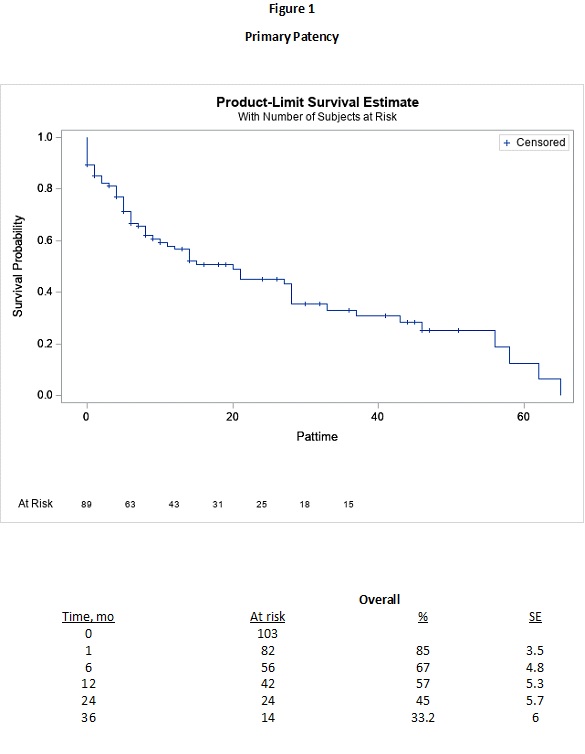The Use Of Drug-Eluting Stents In Patients With CLI And Infrapopliteal Arterial Disease A Real World Single Center Experience
Ali F. AbuRahma, M.D.1, Matthew Beasley, M.D.1, Meghan Davis, M.D.1, Elliot Adams, M.D.1, Jake Shapiro, Medical Student2, L. Scott Dean, Ph.D., MBA3, Elaine Davis, RN, Ed.D.3.
1West Virginia University - Charleston Division, Charleston, WV, USA, 2West Virginia University School of Medicine, Charleston, WV, USA, 3CAMC Health Education & Research Institute, Charleston, WV, USA.
Background: Although there is no drug-eluting stent (DES) approved by the FDA for the use in infrapopliteal arterial disease, several industry sponsored trials reported the outcome of the use of paclitaxel or sirolimus DES. There is only one study to date reported on the use of everolimus DES in this location. Our present study analyzed the clinical outcome using everolimus DES from real world single center. Patient populations/methods: 107 limbs with critical limb ischemia (CLI) (98 patients, 118 lesions) treated with DES (Xience) were analyzed. Perioperative early outcome, MALE (major adverse limb event: above ankle limb amputation or major intervention at 1 year) and MAEs (major adverse events) (death, amputation, target lesion thrombosis/reintervention) were analyzed. Kaplan-Meier Analysis was used to estimate primary patency rates (based on duplex ultrasound), amputation free rates and amputation free survival rates (AFS). Results: 118 lesions treated which included: anterior tibial (AT) 33%, tibioperoneal (TP) 28%, posterior tibial (PT) 21%, peroneal artery (PA) 8%, TP/PT 5%, TP/PA 4% and TP/AT 1%. Mean lesion length was 41 mm and 59% had total occlusion (41% stenosis). Mean follow-up was 18.5 months (range 1-70 months). Overall perioperative complication rate was 11% (2% major amputations) with 2% mortality. Late symptom improvement of ≥ one Rutherford category was obtained in 71%. The MAE rate at 30 days was 12% and at 1 year was 33%. The MALE rate at 1 year was 15%. The overall primary patency rates was 42%. Primary patency rates at 1, 2 and 3 years were 57%, 45% and 33%, respectively. (Figure 1) The major amputation free rates at 1, 2 and 3 years were 87%, 80% and 77% with overall AFS rates of 78%, 68% and 61%, respectively. Conclusions: Clinical outcomes after DES (Xience) for infrapopliteal lesions were somewhat satisfactory at 1 year but inferior to what has been reported previously, particularly at 3 years. Further data with long-term follow-up is needed. 
Back to 2021 ePosters
